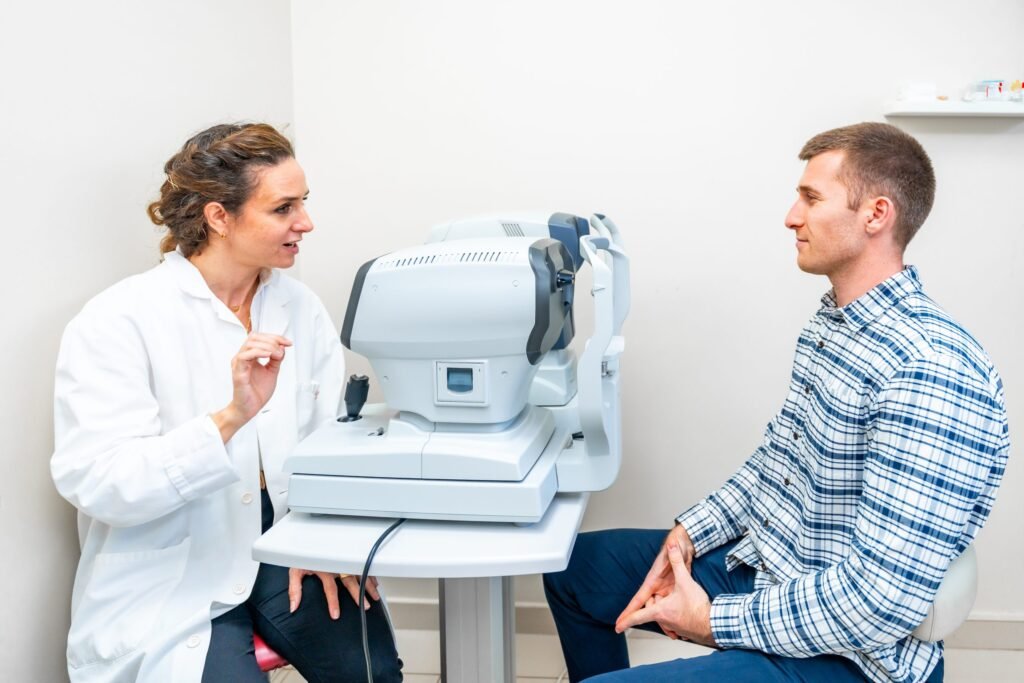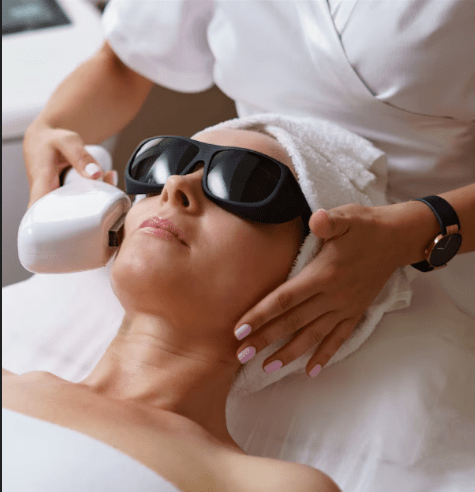If you’re considering laser vision correction, you may have heard of SMILE eye surgery—a minimally invasive procedure that’s quickly gaining popularity as an alternative to LASIK and PRK. But what exactly is SMILE, and how does it work?
In this comprehensive guide, we’ll explain everything first-time patients need to know about SMILE eye surgery, including the procedure, benefits, risks, recovery, and how it compares to other refractive surgeries.
What Is SMILE Eye Surgery?
SMILE stands for Small Incision Lenticule Extraction. It is a next-generation laser vision correction procedure that treats common vision problems such as:
- Myopia (nearsightedness)
- Astigmatism
Unlike LASIK, SMILE does not require the creation of a corneal flap. Instead, it uses a femtosecond laser to create a small, disc-shaped piece of tissue (called a lenticule) within the cornea. This lenticule is then removed through a tiny incision, reshaping the cornea and correcting your vision.
How Does SMILE Work?
The procedure takes about 10–15 minutes for both eyes and involves the following steps:
- Preparation: The eye is numbed with anesthetic eye drops.
- Laser Application: A femtosecond laser creates the lenticule inside the cornea and a small incision (~2–4 mm).
- Lenticule Removal: The surgeon removes the lenticule through the incision, altering the corneal shape.
- Healing Begins: The incision is so small it heals on its own without stitches.
Benefits of SMILE Eye Surgery
SMILE is praised for its minimally invasive technique and fast recovery time. Here are the key advantages:
- No Corneal Flap: Reduces the risk of flap-related complications.
- Fewer Dry Eye Symptoms: Less disruption to corneal nerves compared to LASIK.
- Minimal Invasive Incision: Leads to faster healing and better corneal strength retention.
- Suitable for Active Lifestyles: Less risk of flap dislodgement makes it ideal for athletes and military personnel.
Who Is a Good Candidate for SMILE?
You may be a good candidate for SMILE surgery if you:
- Are over 18 years old
- Have stable vision for at least one year
- Have mild to moderate myopia (up to -10.00 diopters)
- Have astigmatism (up to -3.00 diopters)
- Have healthy corneas
- Are not pregnant or breastfeeding
Your ophthalmologist will perform a full eye exam to confirm eligibility.
SMILE vs. LASIK vs. PRK
| Feature | SMILE | LASIK | PRK |
|---|---|---|---|
| Invasiveness | Least invasive | Requires corneal flap | Surface ablation |
| Recovery Time | 1–2 days | 1–2 days | 5–7 days |
| Dry Eyes | Lower risk | Higher risk | Moderate risk |
| Flap Complications | None | Possible | None |
| Ideal For | Active individuals | General population | Thin corneas |
What to Expect During Recovery
Recovery after SMILE is generally quick and straightforward:
- First 24 Hours: Blurry vision that stabilizes rapidly; minimal discomfort.
- Within 1 Week: Most patients return to normal daily activities.
- Full Results: Vision stabilizes and reaches optimal clarity within 1–2 weeks.
You’ll be prescribed antibiotic and lubricating eye drops to support healing and prevent infection. Follow-up appointments will ensure proper recovery.
Risks and Side Effects
While SMILE is considered very safe, like all surgeries, it carries some risks, including:
- Temporary dry eyes
- Glare or halos around lights
- Undercorrection or overcorrection
- Infection or inflammation (rare)
- Need for enhancement procedure
Most side effects are mild and resolve on their own or with minor treatment.
Cost of SMILE Eye Surgery
The cost of SMILE varies by clinic and region but typically ranges from $2,000 to $3,500 per eye. While insurance usually doesn’t cover elective vision correction procedures, many clinics offer financing plans.
Is SMILE Right for You?
SMILE eye surgery is an excellent option for many patients seeking long-term vision correction without the potential complications of a corneal flap. It’s especially appealing to those with active lifestyles, thin corneas, or concerns about dry eye after LASIK.
Final Thoughts
SMILE eye surgery is a cutting-edge, minimally invasive laser vision correction procedure offering quick recovery, minimal discomfort, and excellent visual outcomes. If you’re tired of glasses or contact lenses and looking for a safe, effective solution, SMILE may be the right choice for you.
Talk to a qualified refractive surgeon to learn more about your options and determine if SMILE is the best fit for your eyes and lifestyle.




